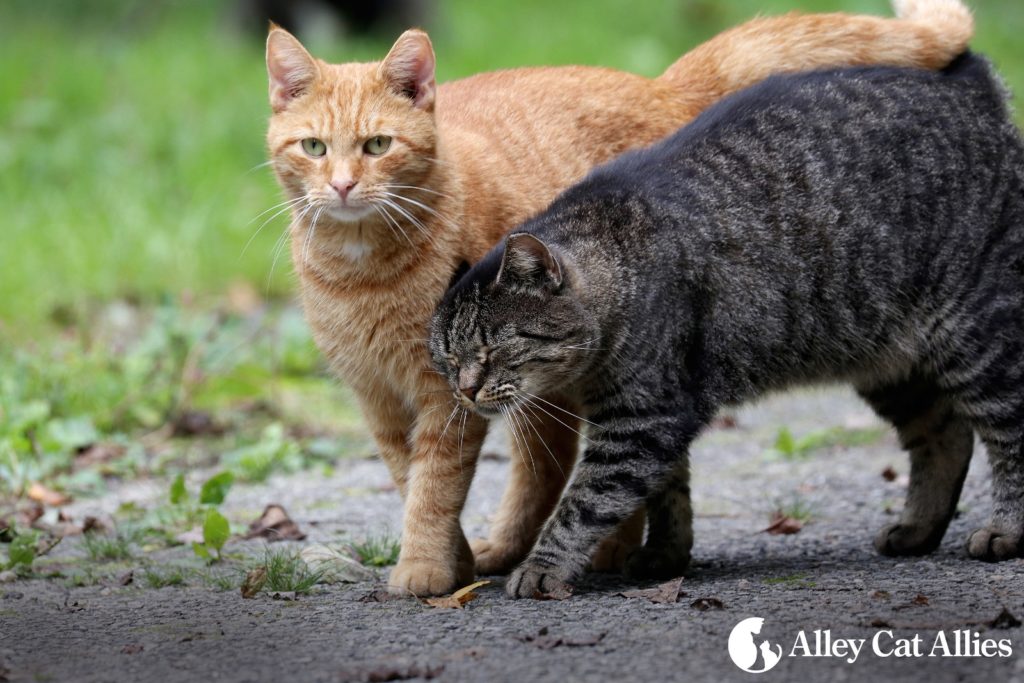 Right now, Hawaii is considering a bill that would request the state Department of Agriculture to identify land that can be used as animal sanctuaries in an attempt to manage Hawaii’s cat population.
Right now, Hawaii is considering a bill that would request the state Department of Agriculture to identify land that can be used as animal sanctuaries in an attempt to manage Hawaii’s cat population.
The truth is, sanctuaries are often anything but for cats. They easily become breeding grounds for disease on top of the stress of forcing community cats out of the outdoor homes they know and into unfamiliar areas with unfamiliar cats. Sanctuaries typically do not have the resources or staff to meet cats’ needs or the challenges inherent in trying to corral unsocialized animals into one relatively small area.
Alley Cat Allies wrote a letter of testimony on behalf of the cats and our thousands of supporters in Hawaii to explain the faults in the bill and urge Hawaii legislators to vote NO. You can find the text of our letter below:
Dear Chairman Gabbard and Members:
On behalf of Alley Cat Allies and our thousands of supporters in Hawaii, I urge you to vote NO on SR 67 and its companion resolution, SCR 75, both titled “Pet Animal Sanctuaries.” If passed by the legislature, SR 67 and SCR 75 would request the state Department of Agriculture to identify existing departmental lands unsuitable for agricultural use that may be leased or used as pet animal sanctuaries. These resolutions would ignore the reality that so-called sanctuaries are not a viable option for managing Hawaii’s cats.
Alley Cat Allies is the leading international advocacy organization dedicated to protecting and improving the lives of all cats. We have promoted sound and compassionate programs for cats since our founding in 1990. We work with lawmakers, shelters and the public to change attitudes, launch new programs and advance lifesaving laws and policies that serve the best interests of cats.
>So called sanctuaries have been tried before, but they simply do not work. It would be prohibitively expensive to round up all the cats from a local area, much less an entire state, into enclosures. These funds would be better spent supporting low-cost spay and neuter services, including Trap-Neuter-Return (TNR). Furthermore, sanctuaries typically do not have the resources or staff to meet cats’ needs.
Communities that may attempt a low-budget sanctuary would instead create an inhumane prison. Cats in such cramped spaces would be vulnerable to disease and suffer mental anguish, similar to what they experience in shelters prior to being killed. Relocation, which is required to bring cats to a sanctuary, is stressful and potentially dangerous for community cats – unowned cats who live outdoors.
Removing community cats from their outdoor homes will also lead to a well-known phenomenon known as the Vacuum Effect. Cats remaining in the vicinity will move in to take advantage of the newly available food and territory. The Vacuum Effect has been observed in many species.
For socialized cats who are friendly toward people, sanctuaries bring additional problems. The lack of human contact and being around unfamiliar cats can both be extremely stressful. If sick cats are not separated from healthy cats in the enclosure, disease will spread quickly.
In advocating for this policy, SR 67 and SCR 75 include serious inaccuracies.
Despite claims to the contrary in the proposed resolutions, scientific evidence consistently exonerates the domestic cat species of being a major threat to wildlife populations. Leading biologists, climate scientists and environmental watchdogs agree that climate change, habitat destruction and development are the leading causes of species loss. Attempting to pin the blame on cats conveniently ignores the reality that the solutions to species loss lie squarely in our hands.
The exaggerated claim of 2.4 billion birds being killed by cats each year has been widely discredited in the scientific community. This faulty statistic has its origins in the book “Cat Wars.” To arrive at this claim, the book relied on previous studies, most of which were over 60 years old at the date of publication. The authors of the book went further to advocate for removing all cats who live in the outdoors in the name of “conservation,” which is both impractical and immoral. One reviewer of the book even pointed to the same author’s separate claim that 1 billion birds are killed each year from building collisions, and yet the total number of birds in the U.S. is only estimated at a little over 3 billion. The claims simply don’t add up.
Finally, the resolutions invoke the common scare tactic of referring to toxoplasmosis. Here are the facts: Most cases of toxoplasmosis stem from undercooked food, not cats, and especially not feral cats who avoid human contact. Cooking food to safe temperatures and changing the litter box daily are simple prevention techniques recommended by the Centers for Disease Control.
The only humane and effective approach to community cat populations is TNR, in which cats are humanely trapped, spayed or neutered, vaccinated, eartipped for identification, and returned to their outdoor homes. TNR is evidence-based, sound public policy. It effectively and humanely addresses the community cat population, can reduce shelter intake and killing, and reduces calls to animal services, which saves taxpayer dollars. Published scientific studies demonstrate that TNR ends the breeding cycle, meaning no new kittens are born, while improving the lives of community cats and their relationships with people who live near them.
TNR is a proven approach to community cats, embraced by communities throughout the U.S. in every possible landscape. Inhumane, expensive enclosures, on the other hand, have never proven to work. For these reasons, please vote NO on SR 67 and SCR 75.

